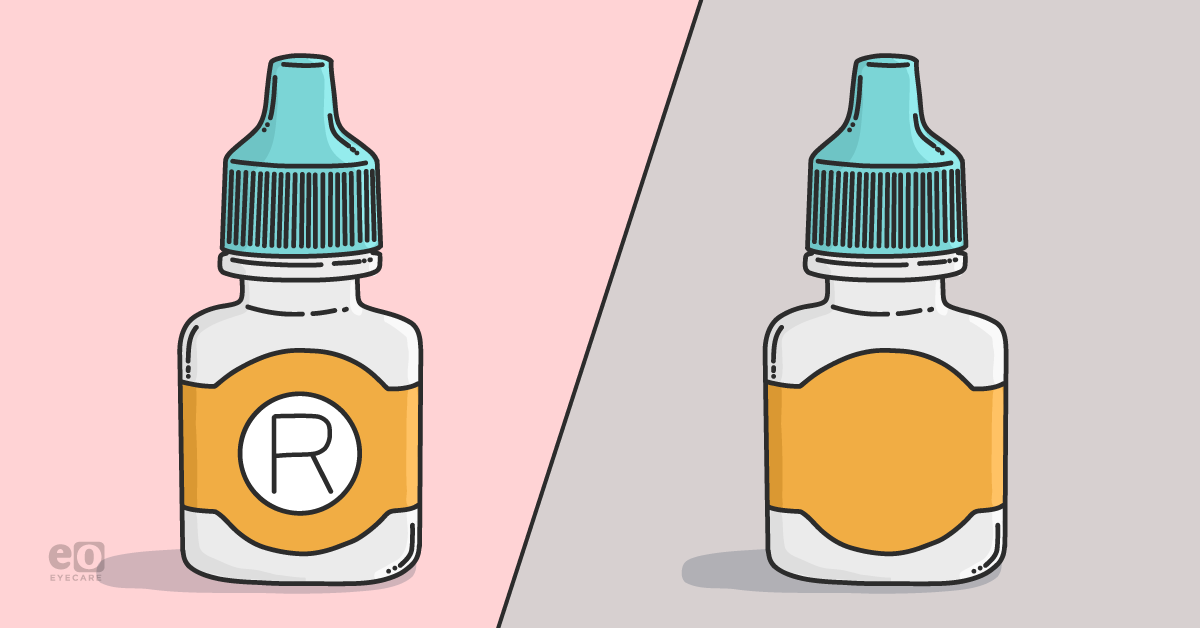Ophthalmic drugs play a key role in the treatment and management of various eye conditions, including ocular infections and inflammation,
glaucoma, and
dry eye syndrome. When it comes to acquiring ophthalmic medications, patients often have to choose between brand-name and generic drugs.
This article explores the similarities and differences between brand-name and generic ophthalmic drugs, focusing on factors such as efficacy, safety, cost, and regulation.
Similarities between brand-name and generic drugs
Brand-name and generic ophthalmic drugs have many similarities, which is a reason why patients may benefit from using either drug. One of the major similarities is the active ingredients of a brand-name and generic drug. Both types of drugs contain the same active pharmaceutical ingredient (API) responsible for the therapeutic effect.1
This ensures the drugs provide comparable medical benefits when used as directed. For example, the drug
Xalatan (Pfizer, New York, USA) contains the active ingredient latanoprost; this is a prostaglandin F2α analog used to treat primary open-angle glaucoma by improving aqueous drainage to reduce intraocular pressure.
2 The generic drug is marketed simply as latanoprost, the same active ingredient in Xalatan.
Additionally, brand-name and generic ophthalmic drugs are used for the same therapeutic indications. They are designed to treat specific eye conditions, ranging from
macular degeneration to glaucoma, infections, and dry eye. Regardless of the drug being brand name or generic, its goal is to alleviate symptoms and improve patients' ocular health. As mentioned above, both Xalatan and generic latanoprost would be indicated in
primary open-angle glaucoma.
2Lastly, brand-name and generic ophthalmic drugs can be purchased over the counter or prescribed in various formulations, including eye drops, ointments, and gels. They are administered topically to the eye, adhering to the specific application and dosing instructions provided by eyecare professionals.
In regards to dosage, brand name and generic drugs offer near equivalent concentration options to ensure sufficient and consistent delivery of the therapeutic agent. For example, Xalatan and generic latanoprost both have a concentration of 50mcg/mL.2
Download the Brand-Name/Generic Medication Cheat Sheet
Keep reading for free!
Every article, ebook, and video is 100% free.
Differences between brand-name and generic drugs
1. It often comes down to cost.
One of the primary
differences between brand-name and generic ophthalmic drugs is the cost. Brand-name drugs are commonly more expensive than their generic counterparts. This price difference arises due to the investments made by pharmaceutical companies in research, development, and marketing.
On the other hand, generic drugs can only be produced after the patent protection period expires, which generally lasts 20 years, allowing other manufacturers to produce generic medications at considerably lower prices.3
The median cost of Xalatan without insurance coverage is $311.15, whereas the median cost of generic latanoprost is $46.01 for a 2.5mL bottle, over a $265 difference in price.4 Xalatan can cost as low as $243.24 and as high as $326.20.4 Generic latanoprost ranges from $32.26 at a low and $91.24 at a high.4
2. Formulations merit consideration.
Although brand-name and generic drugs contain the same active ingredient, they may differ in their formulations and the excipients used.
Excipients are inactive substances necessary to maintain the stability, solubility, or delivery of the active ingredient.
5 Although these differences are considered insignificant regarding therapeutic efficacy, some patients may have specific sensitivities or allergies to a given excipient.
5In fact, a
study from the Massachusetts Institute of Technology (MIT) concluded that approximately 93% of medications contain excipients that can potentially cause an allergic reaction.
6 Patients should consult their eyecare provider if they have concerns about excipients in a specific medication and be sure to notify their provider of any existing medication allergies. Harmful adverse reactions to drugs can be avoided by doing so.
3. You can judge a drug by its cover.
Brand-name and generic ophthalmic drugs usually have a unique appearance and packaging to distinguish them from other drugs. Brand-name drugs are advertised under a specific brand identity, which includes unique packaging designs, logos, and colors.7 The purpose of this is to help pharmaceutical companies build brand recognition and establish a customer base.
In contrast, generic drugs are simply packaged, featuring the drug's generic name prominently. While the cap color of the bottle may seem insignificant, this is one of the
major ways patients identify their eye drops, rather than remembering the names of each drop.
7 Even the squeezability of the bottle can affect patient compliance and drug effect, as a decrease in drop size could potentially deliver a subtherapeutic dose to the patient.
74. What is bioequivalence?
Brand-name drugs undergo a meticulous approval process by regulatory agencies, such as the US Food and Drug Administration (FDA).
7 This process involves extensive clinical trials demonstrating safety, efficacy, and quality. On the flip side, generic drugs must demonstrate
bioequivalence to the brand-name drug through comparative studies.
7Bioequivalence is defined as two drugs that exhibit the same bioavailability when administered in equal doses; bioavailability is the rate and concentration at which a drug reaches systemic circulation. Generic drugs receive regulatory approval only after the brand name drug's patent expires, ensuring they meet the same quality and safety standards.7
Generic drugs must demonstrate efficacy that is ±10% of the primary endpoint used in registry FDA trials for the brand name drug. Additionally, generic drugs cannot have any new safety signals or deviate from the registry FDA trials for the brand name drug.
Conclusion
When choosing between brand-name and generic ophthalmic drugs, patients should take into consideration a variety of factors, including cost, formulation, appearance, and regulatory approval.
While both brand-name and generic drugs contain the same active ingredient and are therapeutically equivalent, the excipients, price, and appearance may vary significantly.
Don't forget to download the Brand-Name/Generic Medication Cheat Sheet with a breakdown of common brand-name ophthalmic medications and their generic counterparts.


